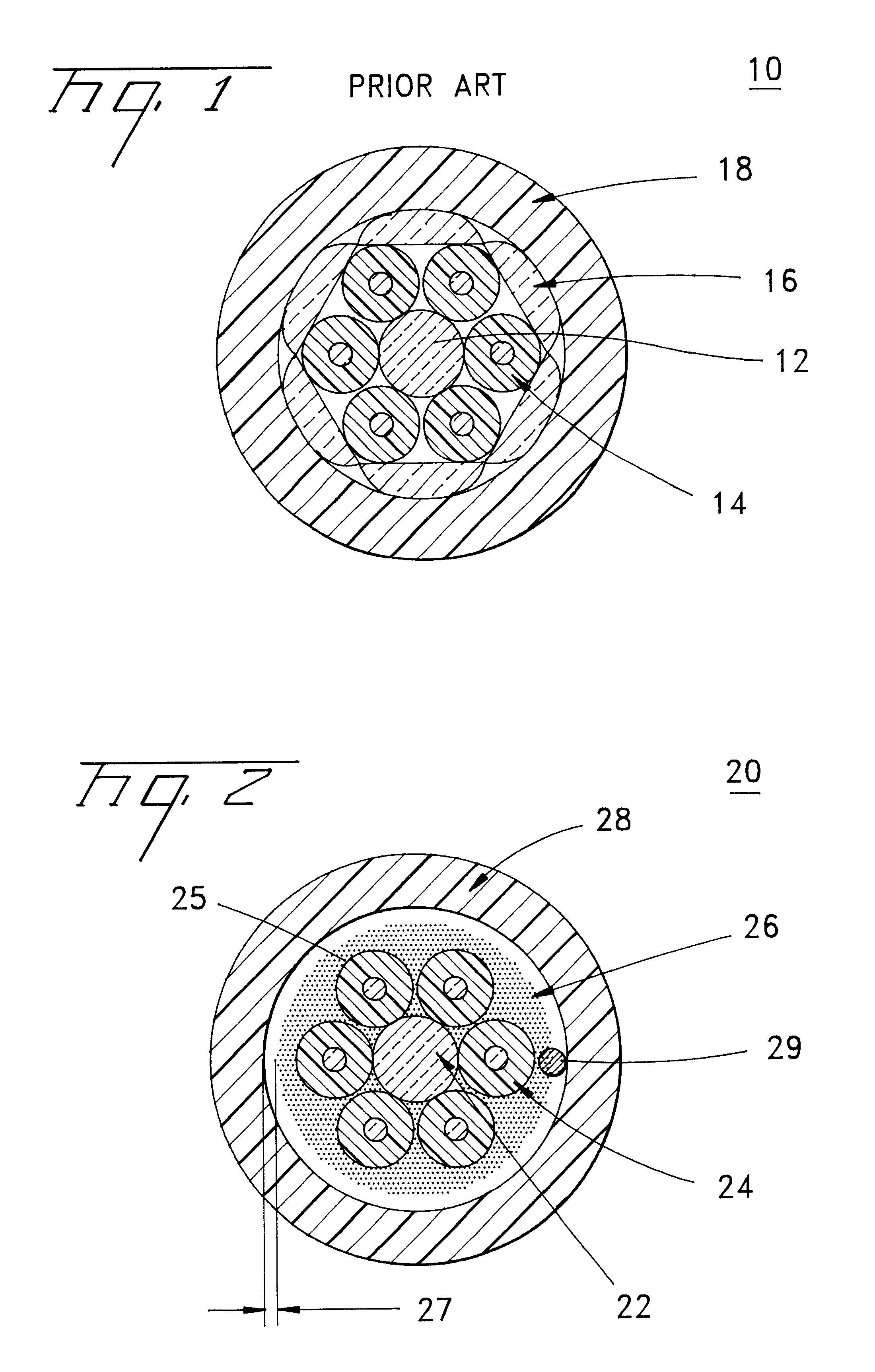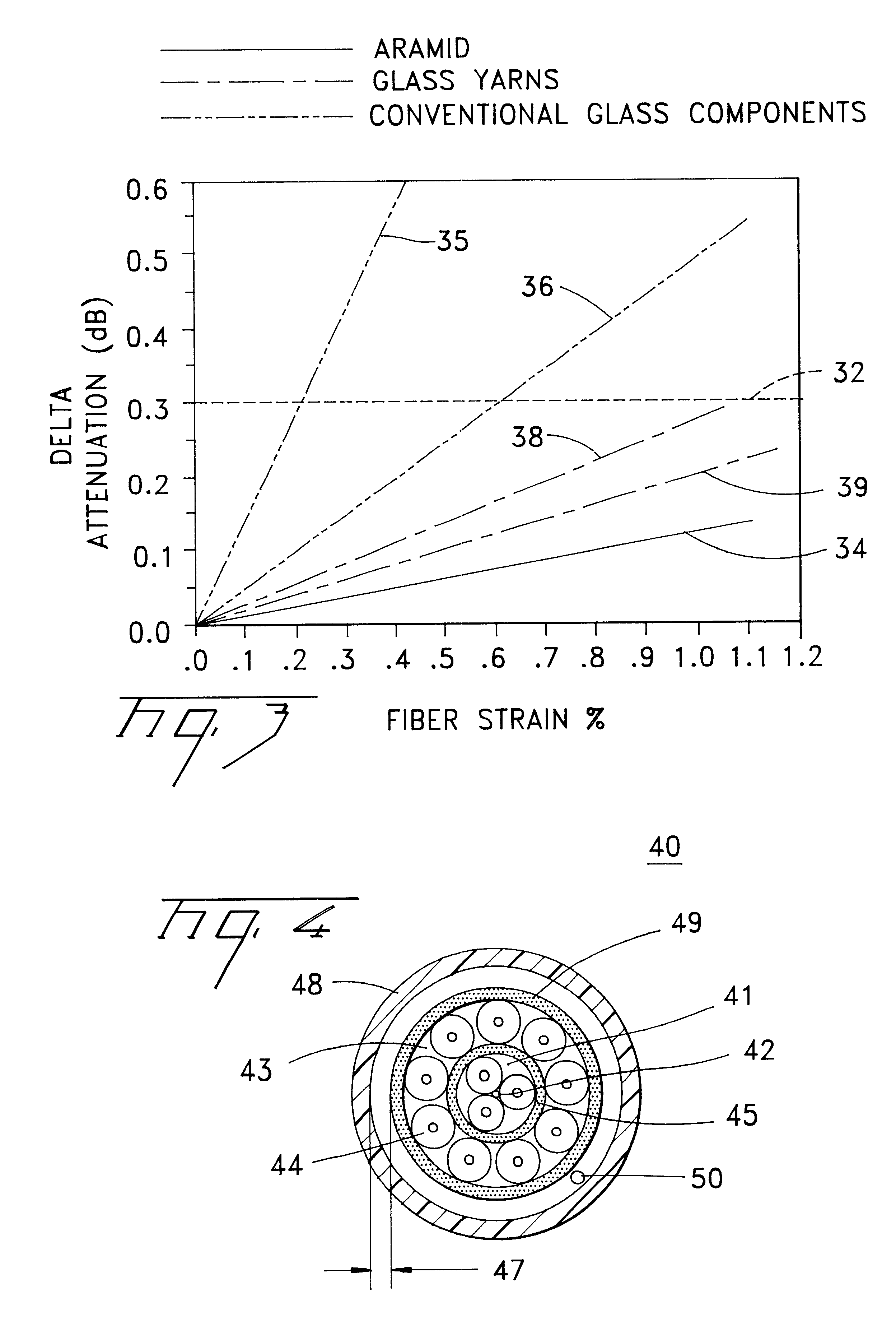Fiber optic cables with strength members and methods of making the same
a technology of fiber optic cables and strength members, applied in the direction of optics, fibre mechanical structures, instruments, etc., can solve the problems of increasing cable manufacturing costs, shortening fiber optic cable materials, and high cost of aramid fibers
- Summary
- Abstract
- Description
- Claims
- Application Information
AI Technical Summary
Benefits of technology
Problems solved by technology
Method used
Image
Examples
Embodiment Construction
A fiber optic cable 20 according to an embodiment of the present invention is depicted in FIG. 2. Fiber optic cable 20 includes a plurality of optical fiber components 24 that are stranded or longitudinally disposed about a central member 22. Interposed between optical fiber components 24 and a jacket 28 is a layer 25 of stranded yarns 26 substantially surrounding optical fiber components 24. The present invention can include a space 27, at the time of extrusion, disposed between a cable core 80 and a jacket 28 allowing relative movement among layer 25, yarns 26, optical fiber components 24 and jacket 28, for example, during cable bending and / or thermal variation.
Yarns used in cables according to the present invention are softer and have increased flexibility compared with the conventional glass components used in previous outdoor fiber optic cables. Yarns 26 of the present invention are substantially not conventional glass components, but, rather can include similar glass compositi...
PUM
 Login to View More
Login to View More Abstract
Description
Claims
Application Information
 Login to View More
Login to View More - R&D
- Intellectual Property
- Life Sciences
- Materials
- Tech Scout
- Unparalleled Data Quality
- Higher Quality Content
- 60% Fewer Hallucinations
Browse by: Latest US Patents, China's latest patents, Technical Efficacy Thesaurus, Application Domain, Technology Topic, Popular Technical Reports.
© 2025 PatSnap. All rights reserved.Legal|Privacy policy|Modern Slavery Act Transparency Statement|Sitemap|About US| Contact US: help@patsnap.com



